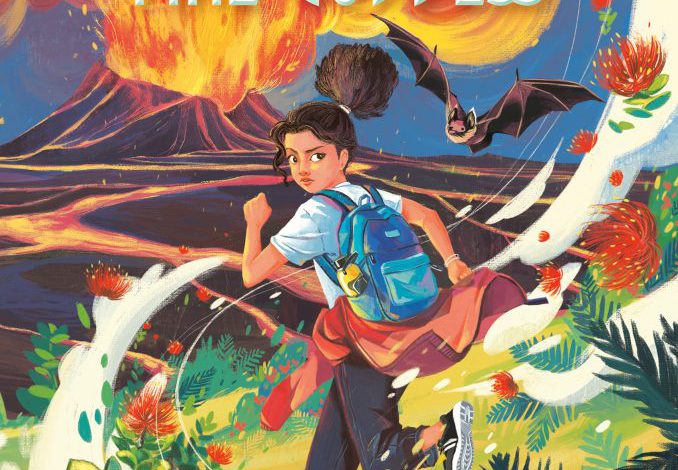Being of mixed race makes it difficult to know which part of the self to defer to or which part takes precedence. This is Anna’s dilemma in Malia Maunakea’s middle grade novel, Lei and the Fire Goddess.
Anna Leilani Kama’ehu is of both western and Hawaiian descent. She has struggled to believe that her grandmother’s traditional stories about gods and goddesses are anything more than just stories. Likewise, she isn’t sure she wants the responsibility thrust upon her: that she is the keeper of the family stories or móolelo.
Now that’s she’s twelve, Anna thinks her visits with her grandmother in the Hawaiian town of Volcano should be more touristy, something epic that will give her cultural capital back home with her friends in Colorado. When Tūtū doesn’t agree, Anna resists. Unsure of all the invisible rules Anna never really understood, she is tired of “having to juggle all the expectations of being who people want [her] to be and cramming the [identity she has chosen] deep down into a little box” (9). In further defiance and amidst the protests of her friend Kaipo, Anna disrespectfully picks one of the fire goddess Pele’s sacred flowers and proclaims that Pele is a myth and curses aren’t real.
Pele’s wrath and retaliation are immediate: The earth quakes, and ‘Io, in the shape of a great winged hawk, snatches Kaipo in her talons and flies away to the top of the volcano, Pele’s home. Now, Anna must save her grandmother’s home from the lava flow and her friend from Pele’s clutches.
When visiting Hawaii, Kaipo always made sure that Anna didn’t feel like a haole—an outsider in her own culture. Now, she flounders. Without Kaipo, there’s a huge hole where Anna’s happy was supposed to be. As Anna sets out to set right the wrong she committed, she encounters a talking bat, Ilikea, and initially believes the bat is a stress-induced hallucination. Soon, Anna realizes that without Kaipo, she is a kuewa, a homeless spirit, until she begins to draw on the knowledge from her tūtū’s stories. The tales inspire her and enable her to move forward as she begins to believe their truth. However, for how long can a fragile human last against a vengeful goddess, prone to fits of temper and rage, spite and malice?
On her quest, Anna embraces her Hawaiian identity, Lei, and leans into several valuable lessons—namely that facts and folktales can coexist. She also accepts the value of trust, understanding that trusting pretty things that promise to change you and turn you into something you’re not is artificial. True friends are those who “stand by you and appreciate you for who you are” (130). Comfortable with one another’s quirks, true friends bring out the best in each other. They don’t pander for outside approval.
Along with Anna, readers will also recognize that we shouldn’t have to conform to anyone’s propaganda of what is trending on social media to earn friendships. Instead, we have to find our own strength, believe in ourselves, and develop our own powerful attitudes.
An added benefit to Maunakea’s adventure tale is its rich cultural vocabulary. It is at once a fantasy and a discussion of the mixed emotions that derive from having a hyphenated identity. In fact, Maunakea dedicates the book “to anyone who has ever questioned which box to check.”
- Posted by Donna

